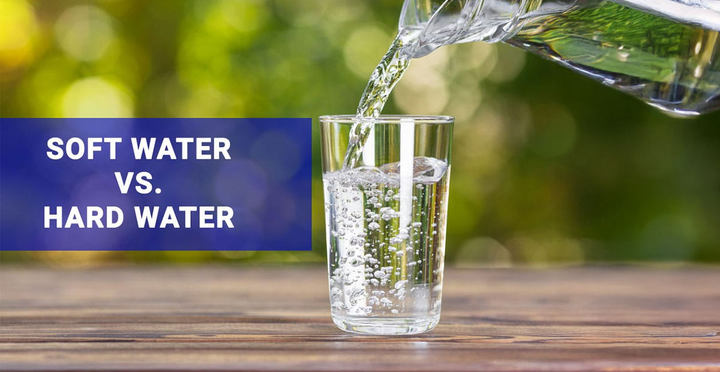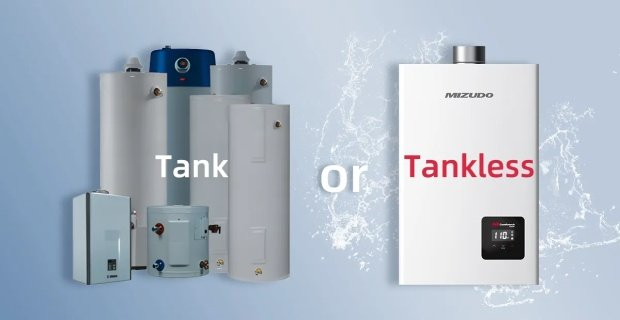The Severity of Water Pollution Is Unimaginable

Water is essential to life, but did you know that the water you drink every day might be contaminated, affecting your health? In the United States alone, millions of people are exposed to contaminated water every year, often without realizing it. According to data from the U.S. Environmental Protection Agency (EPA), over 40% of the nation's rivers and lakes are severely polluted and unable to support healthy aquatic life. This crisis is not just about distant oceans or isolated water bodies—it concerns the water we drink, the water we use to grow our food, and the water that sustains our communities. In this article, we will explore the main sources of water pollution, its widespread impacts, and how technological innovations and lifestyle changes can help safeguard our water resources.
Sources of Water Pollution
1. Industrial Discharges
Industrial activities are one of the primary sources of water pollution. Factories release large amounts of pollutants into water bodies, including heavy metals (such as mercury and lead), organic compounds, and toxic chemicals. According to the EPA, industrial facilities discharged over 1.2 billion pounds of pollutants into waterways in 2019. These pollutants can have devastating effects on aquatic life, causing deformities, reproductive problems, and even death. Moreover, industrial discharges can contaminate drinking water sources, posing significant risks to human health. For example, the 2014 Flint water crisis exposed thousands of people to dangerous levels of lead, with many not learning the truth until years later
2. Agricultural Runoff
Agriculture is the largest user of freshwater, accounting for about 70% of global water consumption. Although essential for food production, agricultural practices often contribute significantly to water pollution. The main sources of agricultural pollution include fertilizers, pesticides, and animal manure. When it rains, these pollutants are washed from fields into nearby water bodies, causing nutrient pollution and algal blooms. According to the Food and Agriculture Organization of the United Nations (FAO), agricultural runoff is the leading cause of water quality degradation in rivers and lakes. In the United States, the EPA reports that agricultural runoff is the primary source of damage to rivers and streams, accounting for over 50% of impaired water bodies.
3. Urban Runoff
Urban areas are also major contributors to water pollution. When it rains, runoff flows over impervious surfaces such as roads, parking lots, and rooftops, picking up pollutants like oil, heavy metals, and trash. This contaminated runoff then flows directly into local water bodies through storm drains, without any treatment. According to research by the U.S. National Academy of Sciences, urban runoff is the second-largest source of water pollution in the United States. In addition to stormwater runoff, aging infrastructure can cause sewage overflows, discharging untreated wastewater into rivers and lakes, posing significant health risks.
4. Household Waste
Every household contributes to water pollution through daily activities. Activities such as dishwashing, showering, and laundry generate wastewater containing detergents and chemicals. Moreover, improper disposal of household chemicals, pharmaceuticals, and personal care products can introduce harmful substances into the water supply. According to the EPA, the average American household uses about 300 gallons of water per day, most of which becomes wastewater. If not properly treated, this wastewater can contaminate groundwater and surface water.

Impacts of Water Pollution
1. Environmental Consequences
Water pollution has severe consequences for aquatic ecosystems. Contaminated water can lead to the death of fish and other aquatic organisms, disrupt food chains, and alter habitats. For example, nutrient pollution from agricultural runoff can cause algal blooms. When algae proliferate, they consume oxygen in the water, creating "dead zones" where fish and other organisms cannot survive. The EPA estimates that over 200,000 acres of lakes, rivers, and coastal waters in the United States are affected by algal blooms each year. In addition, polluted water can harm plants and wildlife that depend on clean water sources, leading to a decline in biodiversity.
2. Health Risks
Water pollution poses significant health risks to humans. Contaminated drinking water can cause a range of diseases, from gastrointestinal illnesses to more severe neurological damage and cancer. According to the World Health Organization (WHO), over 3.4 million people die each year from waterborne diseases. For example, the outbreak of Legionnaires' disease in Flint, Michigan, in 2019 was linked to contaminated drinking water. Moreover, exposure to pollutants like lead and mercury can have long-term health impacts on children and pregnant women.
3. Economic Costs
Water pollution also has significant economic impacts. Treating polluted water is costly, and these expenses are often passed on to consumers through higher water bills. In addition, water pollution can damage industries that rely on clean water, such as fishing, tourism, and agriculture. According to a report from the U.S. National Oceanic and Atmospheric Administration (NOAA), water pollution causes over $100 billion in losses to the U.S. economy each year. This includes costs related to healthcare, productivity losses, and natural resource damage.
Climate Change and Water Pollution
Climate change is exacerbating the problem of water pollution. Rising temperatures, changes in precipitation patterns, and more frequent extreme weather events are all contributing to increased water pollution. For example, heavy rainfall events can cause sewage overflows and quickly wash pollutants into water bodies. In addition, warmer water temperatures can promote the growth of harmful algae and bacteria, further degrading water quality. According to the Intergovernmental Panel on Climate Change (IPCC), the frequency and intensity of water pollution events are expected to increase in the coming decades.

Solutions to Combat Water Pollution
Addressing water pollution requires a multifaceted approach, including policy changes, technological innovation, and individual actions. Here are some practical steps we can take to protect our water resources:
1. Policy and Regulation
Stronger regulations and enforcement are crucial for reducing industrial and agricultural pollution. Governments must set and enforce strict limits on pollutant discharges and provide incentives for industries to adopt cleaner technologies.
2. Technological Innovation
Advances in water treatment technology offer promising solutions for removing pollutants from water. Modern filtration systems, such as reverse osmosis and advanced oxidation processes, can effectively eliminate a wide range of pollutants, including heavy metals, pharmaceuticals, and microplastics
3. Individual Actions
Everyone can play a role in reducing water pollution through simple actions. For example, properly disposing of household chemicals, conserving water, and avoiding single-use plastics can make a significant difference. Additionally, installing a water purification system at home can provide an extra layer of protection against contaminated water—and choosing MIZUDO water purifiers is undoubtedly the best decision you can make!
At MIZUDO, we are committed to providing innovative solutions to ensure that you have access to clean and safe drinking water. Our state-of-the-art water purifiers are designed to remove a wide range of contaminants, including heavy metals, pharmaceutical residues, and harmful chemicals. For example, our reverse osmosis system uses advanced filtration technology to eliminate up to 99% of total dissolved solids (TDS) and over 1,000 different contaminants.
Moreover, all of our MIZUDO water purifiers are certified by NSF, ensuring they meet the highest standards for water purification. Our MIZUDO Megaflo 1000 GPD 9-Stage Purification Under Sink Tankless RO System is no exception. With its stylish design and easy installation, our system is suitable for any household. No matter which product you choose, you can trust MIZUDO to deliver the purest water possible.

Contact us today to learn more about our products and how to protect the health of you and your family with clean, pure water!
Choose MIZUDO to ensure every drop of water is purer.


